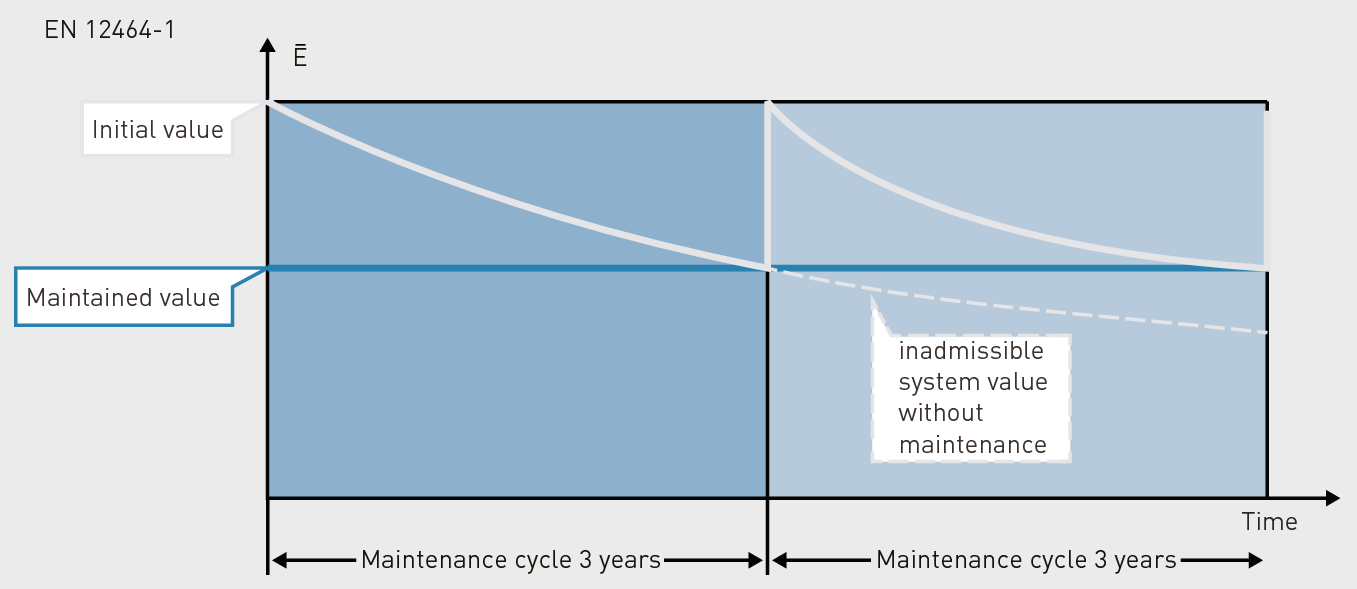The lighting level is described through illuminance and luminance at the workstation/on the visual task. Illuminance is the most important photometric planning parameter. It is determined by visual performance and affects the type and number of lamps and luminaires to be installed, and thus the energy investment for lighting.
Illuminance
Due to lamp degradation as well as soiling of lamps, luminaires and the room, illuminance decreases with progressing operation periods (see figure).
To compensate this decrease, the new system must feature a higher illuminance (initial value). During planning, this decrease is registered using the maintenance factor.
To make sure that the illuminance minimum values for the respective visual task are also given under the operating conditions of the lighting installation, the illuminance values recommended in EN 12464-1 are defined as maintained values Ēm (the abbreviation Ē with its horizontal bar signifies the local average, the index describes the maintained illuminance). They must not be undercut at any time. Where maintained values are reached due to operational influences such as lamp degradation and dust, maintenance and, as necessary, system repairs must be performed.
The initial illuminance, which is the basis for planning, is determined using maintenance value and maintenance factor:
Initial value = maintained value/maintenance factor

Figure 3.14: Decrease of average illuminance over the installation’s operation period in the case of a three-year maintenance cycle